Vegetables to plant in May: 10 crops to sow and grow
Discover the best vegetables to plant in May, and grow cherry tomatoes, baby corn, butternut squash and more

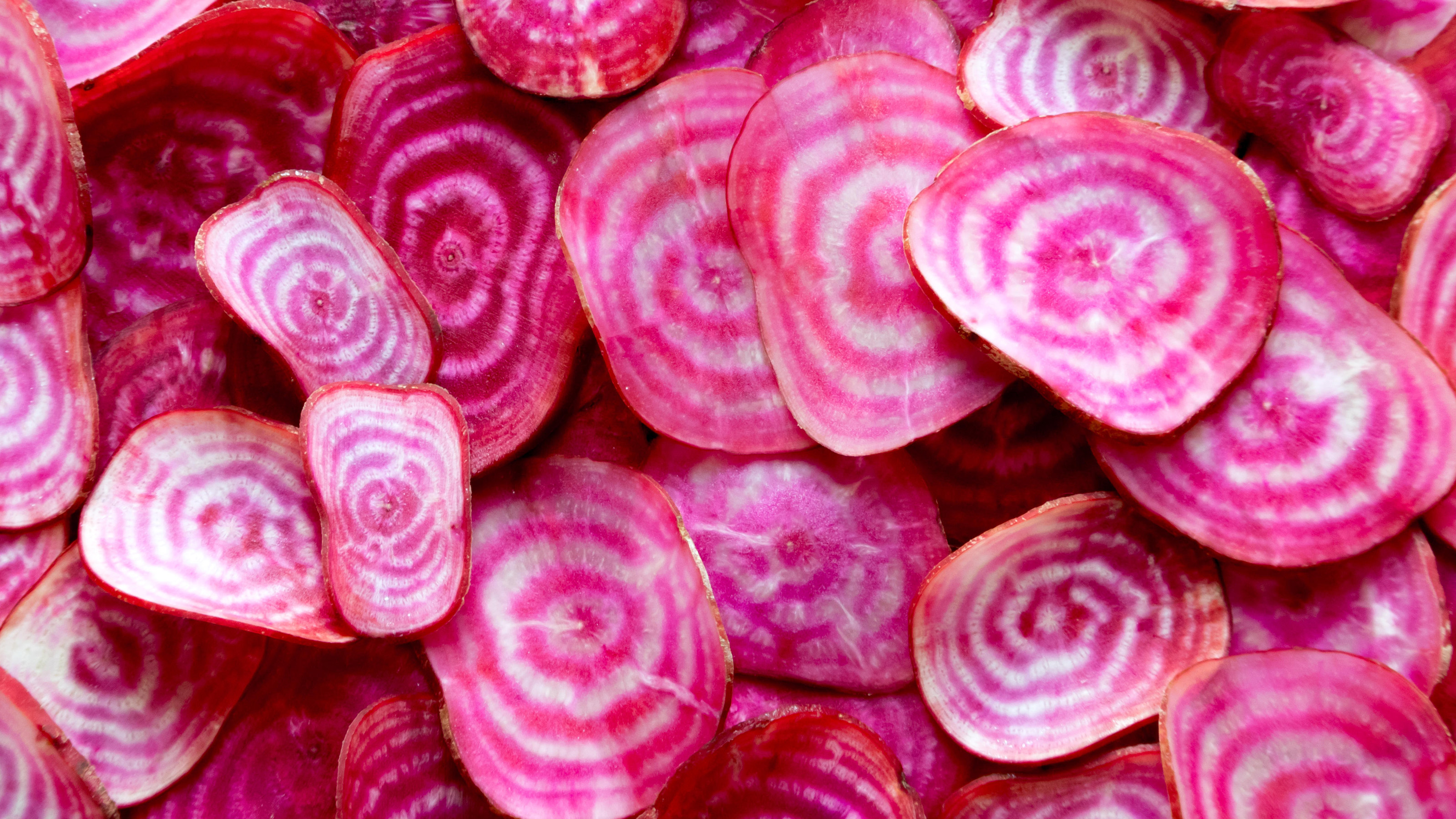
Deciding on the best vegetables to plant in May? Picking crops to cultivate in the weeks ahead is a true joy at this time of year. The chill and gloom of winter has made way for the warmth and promise of longer days. For those of you who made early starts on indoor sowings of tomatoes, peas and beans, these can be introduced into your plots as things warm up. This creates spaces indoors for loads more yummy vegetables to grow.
Between the greenhouse and the veggie patch, there’s a whirl of activity. At this point in the vegetable planting calendar, you have more opportunity to direct-sow more crops into the ground outdoors as well as starting new crops undercover. As 1st May is the halfway point between the vernal equinox and the summer solstice, this month officially marks the start of summer. So in that spirit, let’s jump into our vegetable planting jobs for the month, and have some fun!
Whether you fancy growing slow-maturing rutabagas or quick-cropping callaloo, our run-down of vegetables to plant in May suits every garden and gardening style – from modest container-based cultivation to expansive raised beds, potager plots and even vertical gardening options. Just watch out for the last frosts in colder areas, which can still catch out the uninitiated at this time of year. Don’t ditch the horticultural fleece, cold frames and cloches just yet. Stay ahead of those frosty farewells, and you’re all set for a long summer of lovely harvests.
Try these top vegetables to plant in May and kickstart your gardening summer
Follow our guide to the best vegetables to plant in May, from bulging pumpkins and stripy beetroots to little gherkins and strawberry popcorn. Make the most of indoor spaces for regulated sowings of basil and cucumbers, while taking a chance on the great outdoors for starting off beets and beans in situ. From tumbling teeny toms to super-sized squash, our round-up will see you right.
1. Rutabagas
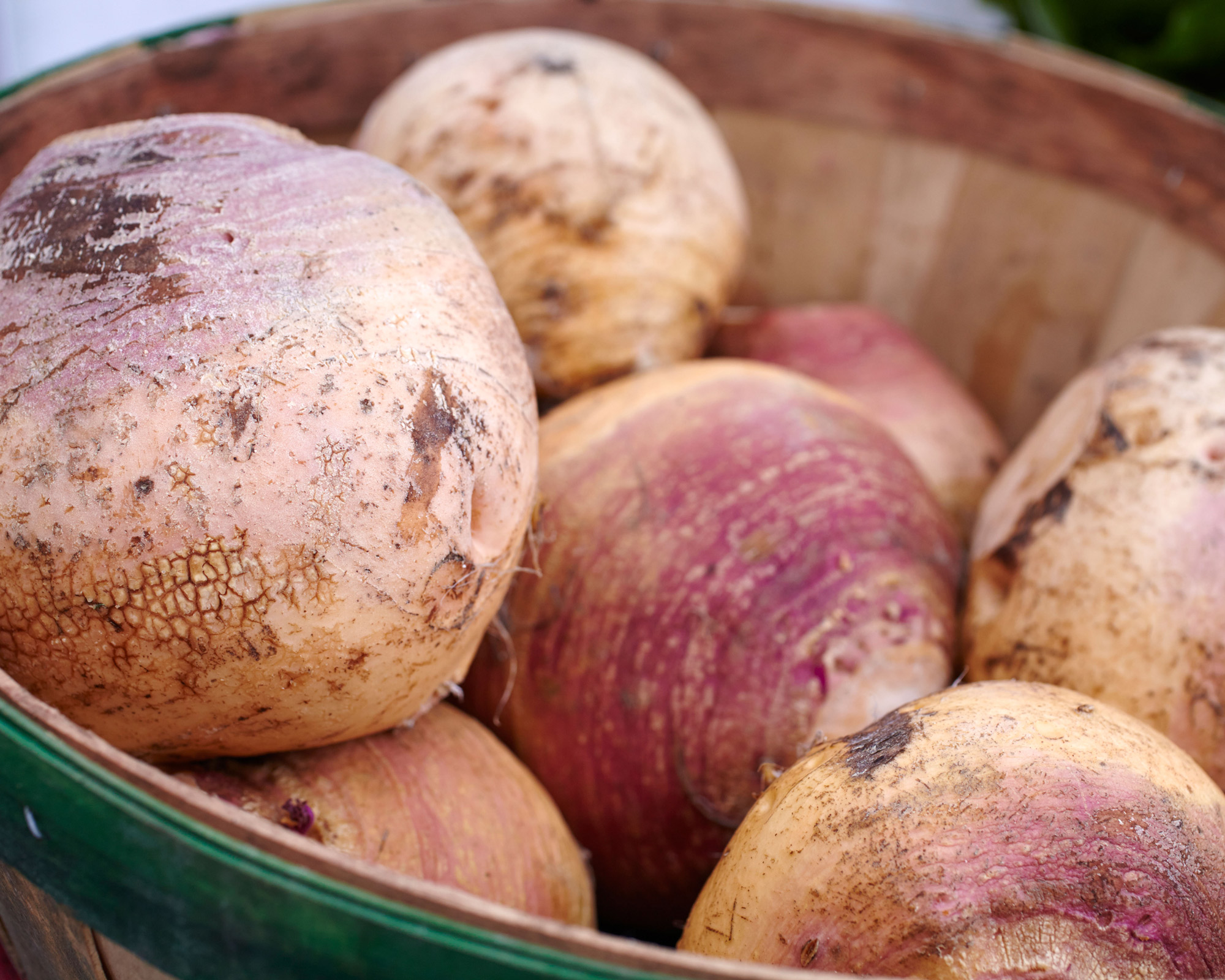
Rutabagas (aka swedes) may not be the prettiest crops in your kitchen garden, but we promise they are some of the tastiest vegetables to plant in May. Pitched as an arcane cross between turnips and wild cabbages dating back to the 1600s, these large and nobbly beasts are as moreish and satisfying as sweet potatoes and well worth cultivating. Rich in fiber, potassium, magnesium and vitamins A, C and B6, these sweet roots are lovely in gratins, soups, roasts, pies and even cakes.
Because rutabagas (Brassica napobrassica) are happiest bulking up when things are cooler outside and take a few months to mature, they are best planted either in autumn or, as we recommend here, when spring opens its eyes. Taking four months to mature, they will benefit from late May sowings underglass or in a sheltered spot with slightly acidic soil (pH 6-6.5) and thrive in hardiness zones 3-9. So plant now, water well, and come the fall (October through to March) you’ll be hip deep in delicious edibles. Try heirloom ‘Laurentian’, violet ‘Marian’, popular ‘American Purple Top’ and delicate ‘Altasweet’.
High-yielding swedes are excellent companions for carrots, beets and onions. If you know how to grow peas or beans, rutabagas make ideal partners. They are best suited to small vegetable garden ideas, raised beds and well-raked plots with rows 14in apart. Oh, and did we mention these marvels from the Middle Ages are also known as ‘mangel-wurzel’? Just don’t ask us why…
2. Cherry tomatoes

There’s a tomato for every garden and taste. Some are particular about where they are cultivated (and when!) and some fare better outdoors or in the ground – but the delectable cherry is a fuss-free breed that adapts well to many planting situations. Thanks to their quick turnaround in spring sunshine, they are essential vegetables to plant in May. If you’re deciding on what to grow in a greenhouse or you fancy growing vegetables in pots, make room for cheeky cherry toms.
Whether you already know how to grow tomatoes or you are looking for a beginner-friendly fruiter, cherry toms (Solanum lycopersicum var. cerasiforme) are a revelation. Try mass-producing ‘Baby Boomer’, heirloom ‘Black Cherry’ and smoky ‘Rosella’, wilt-resistant ‘Sungold’, pea-sized Pimpinellifolium ‘Red Currant’, and basket beauties ‘Sweet Million’ and ‘Tumbling Tom’.
Sow in moist, slightly acidic compost, transplant or pot on when 6-10in (15-25cm), and give six hours of sunshine a day. Keep an eye on air circulation, says Amateur Gardening’s Anne Swithinbank. And leave two feet between planting holes, so plants have free rein to gallop away to a fruitful harvest.
Great companion plants for tomatoes include tagetes, nasturtiums and marigolds. Whether you grow them vertically or in baskets, keep them well supported. Give them a generous weekly drink with warm water (chilling is anathema to these sun-loving fruits) and apply regular high-potash liquid feeds. In just two months from planting, you’ll be popping a mountain of cascading mini toms.
3. Thai basil
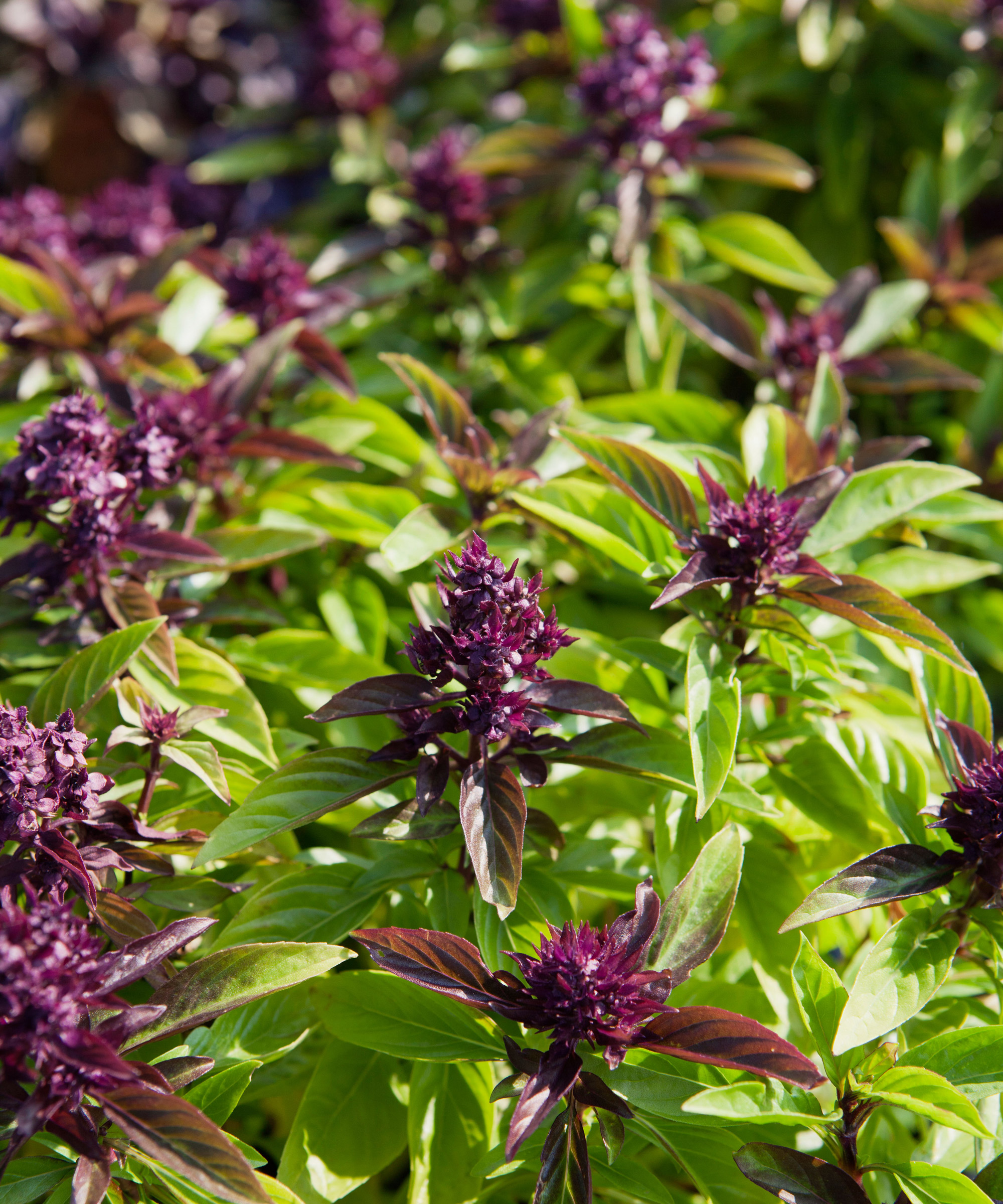
Sweet basil is considered one of the best herbs to grow in your garden – but what of its purple-tinted cousin, Thai basil? If you haven’t tried this flamboyant member of the mint family (known in Vietnam as ‘cinnamon mint’), you’re missing out. With its chewy, aromatic licorice flavor, high vitamin levels, sturdy leaves and antioxidant properties, it’s perfect in tom yum soup, panang curry, high-heat stir-fries and drunken noodles. Ocimum basilicum var. thyrsiflora is a must-have for Asian culinary concoctions.
Start off in well-watered pots under glass to make the most of the sunshine, then keep on a windowsill or in a greenhouse for transplanting or potting on in June. You can also direct-sow in May with a protective cover. As Chris Bonnett of GardeningExpress.co.uk explains, you can sow seeds in warm soil from after last frosts up to August, ensuring continuous crops. Pinch regularly and add a weekly liquid feed to keep these lovely leaves flourishing for longer.
Thai basil thrives in well-draining, loamy soil with a pH of 6.5-7.5, and does well in zones 10-11. For those who know how to grow cilantro and parsley, Thai basil is the perfect companion plant. It is also an excellent planting pal for chives and tomatoes (helping to draw white fly from fruits). You can also start this spicy perennial from cuttings; recommended once plants are three years old to maintain those robust flavors. Great Thai basil varieties include tangy ‘Siam Queen’, pretty ‘Cardinal’, compact ‘Quenette’ and large-leaved ‘Thai Magic’.
4. Baby corn

One of your must-grow vegetables for May is sweetcorn. This is your last month to start off seedlings to give crops time to sweeten up in the summer sunshine. Seedlings started in April can be planted outside in May, once the danger of last frosts has passed. The trick with knowing how to grow sweetcorn is patience, as it takes time for cobs to ripen and reach peak flavors. That said, you can shave a few weeks off the time to harvest by opting for a bite-sized ‘baby corn’ variety such as ‘Snobaby’ or ‘Mini Pop’.
Our favourite baby corn is ‘Strawberry Popcorn’: as well as working wonders in stir-fries, this diminutive corn is perfect for yummy movie snacks! These varieties are some of the best plants for beginners and their growing requirements are like those of standard sweetcorn, says Amateur Gardening’s Lucy Chamberlain. Sow one seed per large module or 3.5in (9cm) pot indoors, at 18-20˚C. After hardening off, transplant into well-spaced blocks in a sunny spot at the end of May or start of June. If you know how to grow courgettes, corn makes an ideal planting partner. It also works well with squash and beans.
Harvest cobs late summer. ‘For the ultimate popcorn, peel back the outer sheaths and hang them somewhere to dry,’ says Lucy. ‘Rub the kernels off the cobs and into a glass bowl – then microwave on full power until ‘pop o’clock’!
5. Butternuts
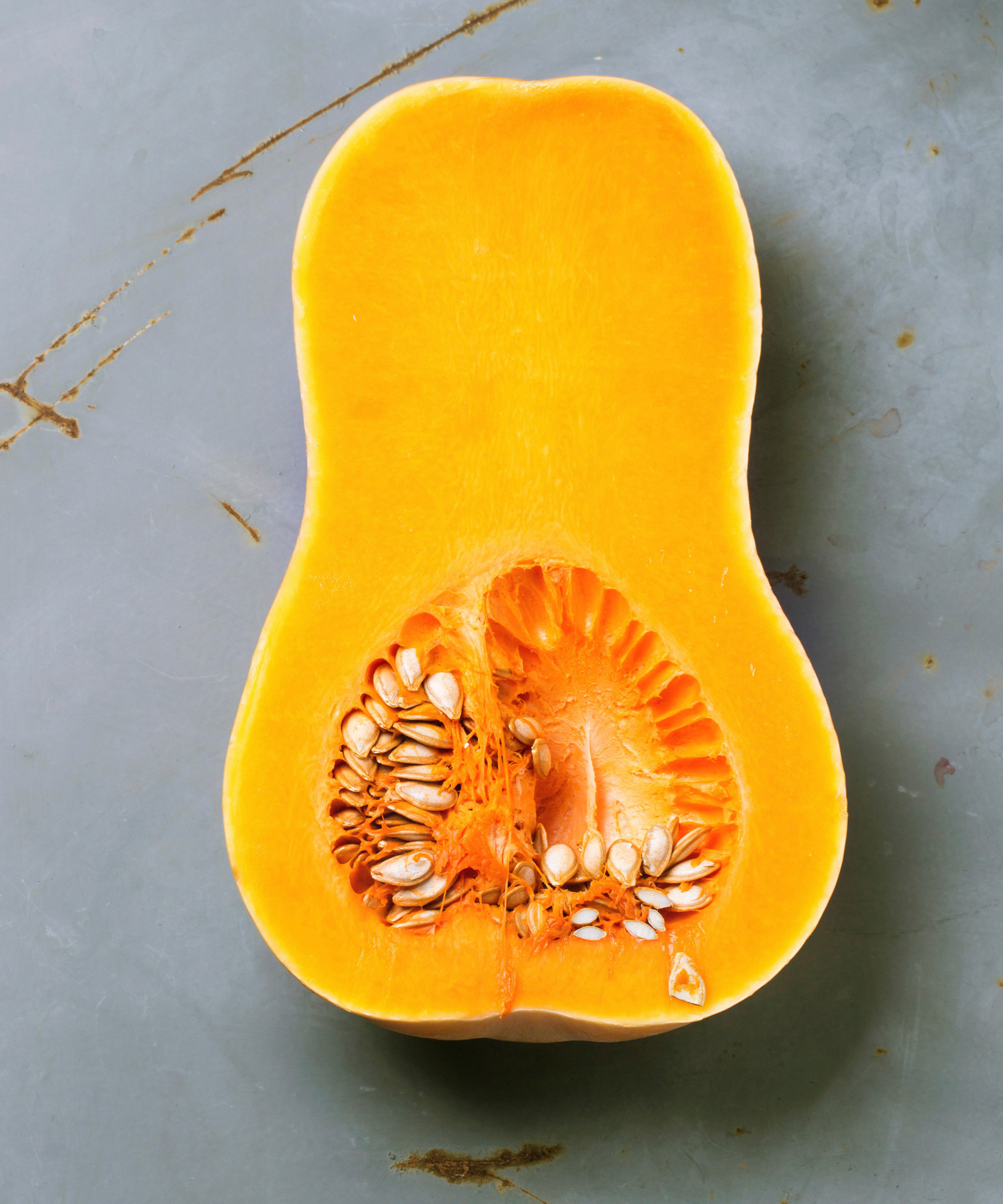
If you’re looking for the easiest vegetables to grow, the bountiful butternut (Cucurbita moschata) is one of the most laidback crops to try. As you learn how to grow butternut squash, just give them plenty of time to develop their protective outer skins and sumptuous flesh. A spring start is key, as Chris Bonnett explains. ‘Seeds do best in warm soil, so pick a spot that gets full sun,’ says Chris. ‘Make sure soil is fertile and mix in some compost.'
So if you didn’t start butternuts undercover in April, this is one of the key vegetables to plant in May. Sow half an inch deep and keep at 18°C/64˚F. They hit their stride over the summer months, slowly thickening up as other crops are bursting towards the finishing line. They crave heat more than other squash, so pre-warm the ground if need be. Butternuts make great companion plants for peppers, sweetcorn, radishes, peas and beans. A fortnightly high-potash liquid feed works wonders when fruits appear, and a mulching of bark chips or black polythene protects moisture levels. Bob Flowerdew also suggests mounding over bare sections of long trailing stems (which root easily) to increase the feeding capacity and get bigger crops.
Butternuts are gaining a reputation as a superfood, thanks to their high potassium levels, abundance of vitamins (notably A), and rich antioxidants. Not only that, all parts of the plant are edible. So as well as tucking in to the bright flesh of ‘Hunter’, ‘Hawk’ and ‘Butter Baby’, you can steam the leaves as a spinach substitute.
6. Pink beetroot
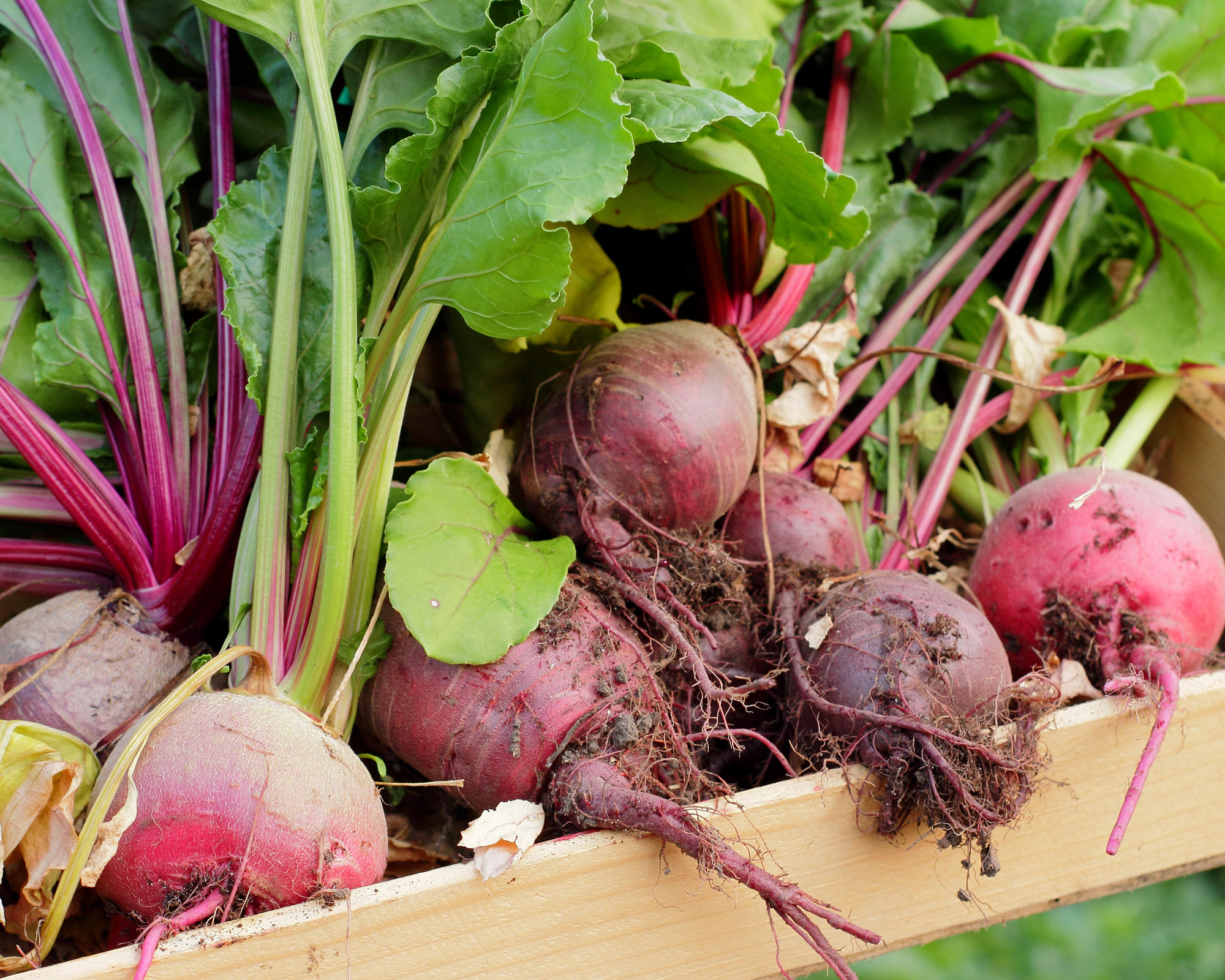
Although most people who grow beetroot (Beta vulgaris) adore the reds and golds, there is another contender we believe is worth including as one of your vegetables to plant in May. Pink beets, also known as candy stripe beets, bull’s eye beets or candy cane beets, pack an eye-catching one-two punch. Slice into these stripy crops to be greeted by hot pink concentric circles, then chow down on the earthy flesh. And knowing how to grow beetroot with stripes could not be simpler!
The likes of ‘Chioggia’ and ‘Natoora Candy’ have a surreal, psychedelic quality. But whether you’re looking for the best vegetables to grow in raised beds, container-grown crops or more adventurous options for your kitchen garden, growing these hot pink beauties is satisfyingly down to earth. They are so pretty, they even work in flower beds. As the ground warms up in May, they develop fast, make the best of average soils (though lime is advised with acidic types), and need minimal input. Just use a moist, well-drained base and keep watering to prevent bolting and cracking.
Sowing in shallow drills or beds is fine, as candy cane beets don’t need loads of root depth. Check your pink-and-whites are planted with 8-12in (20-30cm) spacings and access to plenty of sunshine. Then sow little and often for a steady supply of rosy roots from June to October.
7. Callaloo
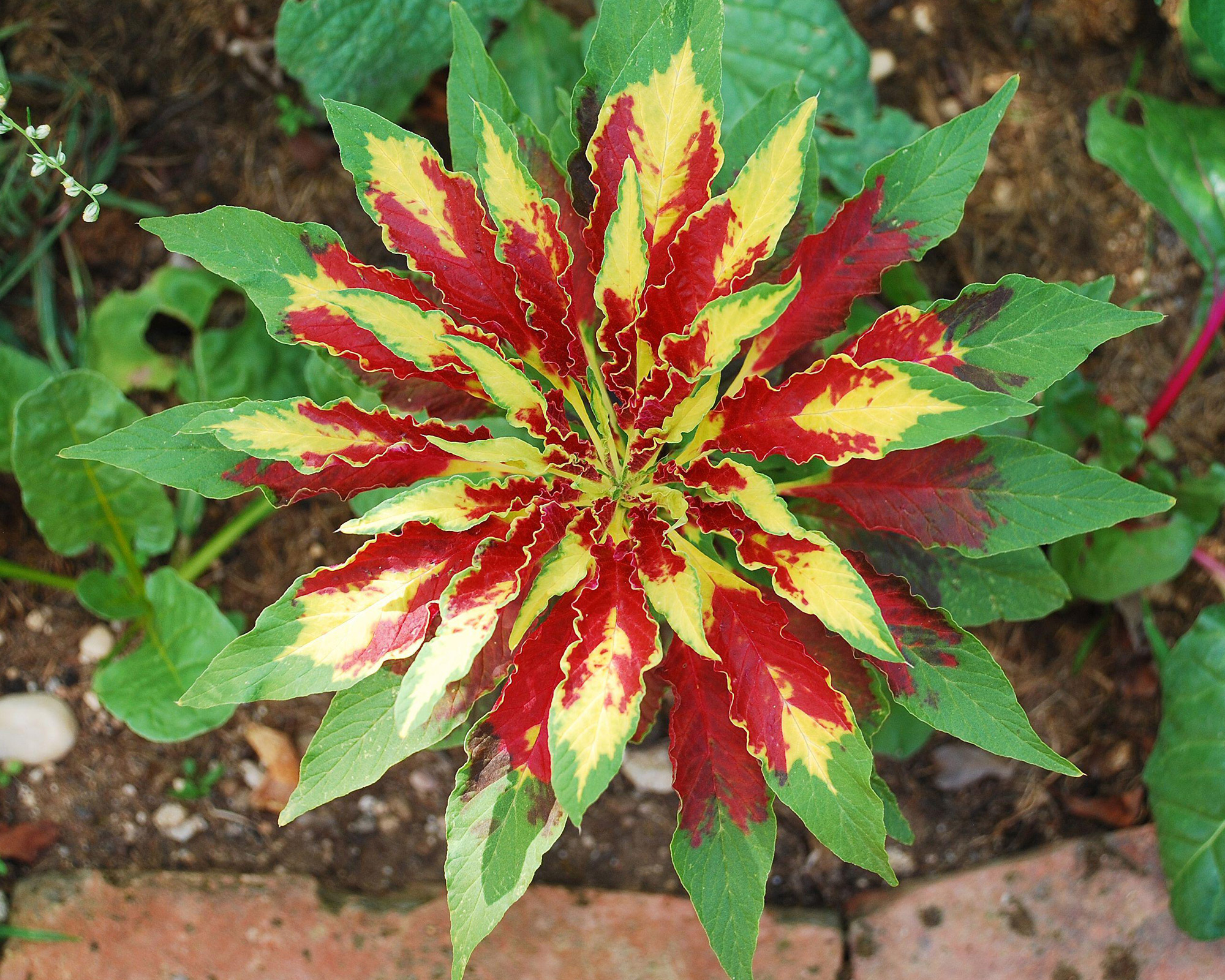
Want to add Caribbean flair to your gardening exploits? Callaloo (aka Caribbean spinach) delivers genuine swagger to the kitchen garden with its acid yellow, green and magenta leaves. It’s a fast-growing leafy annual that will stand proud alongside the best tropical plants in beds and borders, as long as you choose a sunny spot for speedy growth. And if you’re a fan of spinach, this is a splendid variation to grow in hot summers (since standard annual varieties tend to run to seed once the heat kicks in).
Because they are tender crops, they prefer to be started now rather than sooner in the year. Direct sowing is recommended, as long as you pick a spot that is guaranteed at least six hours of sunshine a day (you can also start in modules undercover and transplant later). Lucy Chamberlain recommends sowing in drills 3/4in (2cm) deep, and thinning out to 8-9in (20-23cm) apart. It’s also a good idea to add a well-draining compost to the soil for an extra nutrient boost.
Fans of companion planting can plant callaloo alongside eggplant, tomatoes, sweetcorn and peppers. Once plants reach 12in (30cm) tall, harvest the tips and upper leaves while tender, allowing the rest to re-shoot for future pickings. Don’t forget you can also eat the grains (which are gluten-free and high in protein), making this crop a dynamic addition to the kitchen table.
8. Pumpkins
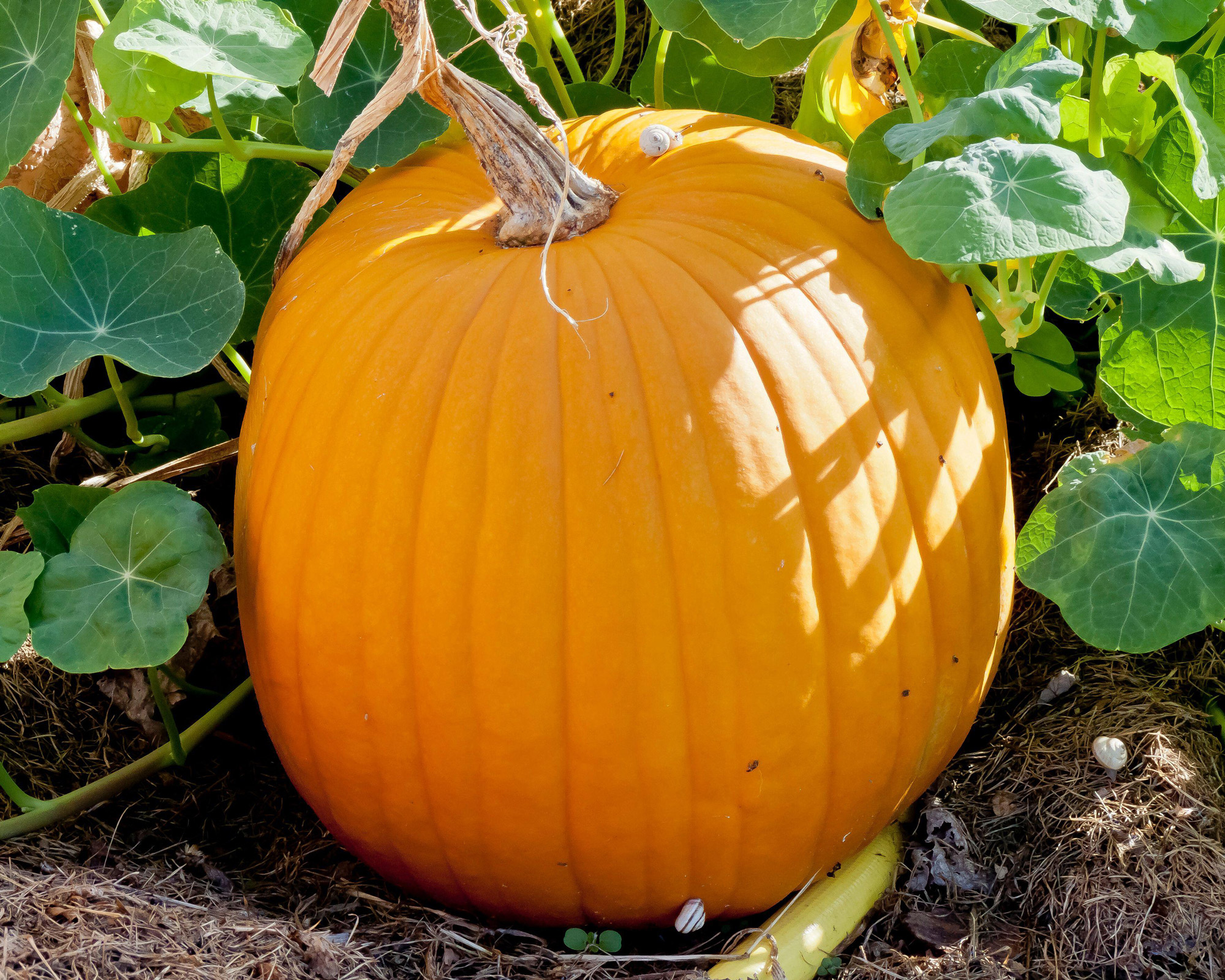
Synonymous with Halloween, pumpkins have garnered a whopping fan base, but knowing how to grow pumpkins also brings a feast of edible pleasures your way, particularly if you have a hankering for a hearty soup or a slice of pie.
For intrepid gardeners keen on growing giant pumpkins, the key considerations are warmth, sunshine, plenty of space and ample moisture. This is crucial as plants flower and fruits swell, says Lucy Chamberlain. Upturned pop bottles sunk into the earth help deliver the most gargantuan returns. Give soil a moisture boost with some organic mulch. It’s also a good idea to peg meandering stems into a spiral and, as fruits fill out, rearrange leaves so crops make the most of the daylight hours. And if you use a smaller breed and a sturdy trellis or net support, growing pumpkins vertically is also possible.
Despite their size pumpkins mature fast, just 60-70 days from planting to harvest, making them some of the most efficient vegetables to plant in May. And alongside classic orange breeds such as ‘Charmant’ and ‘Hundredweight’, striking varieties include stripey ‘Kakai’, scalloped ‘Musquee de Provence’ and groovy muffin-top ‘Queensland Blue’.
9. Cranberry beans
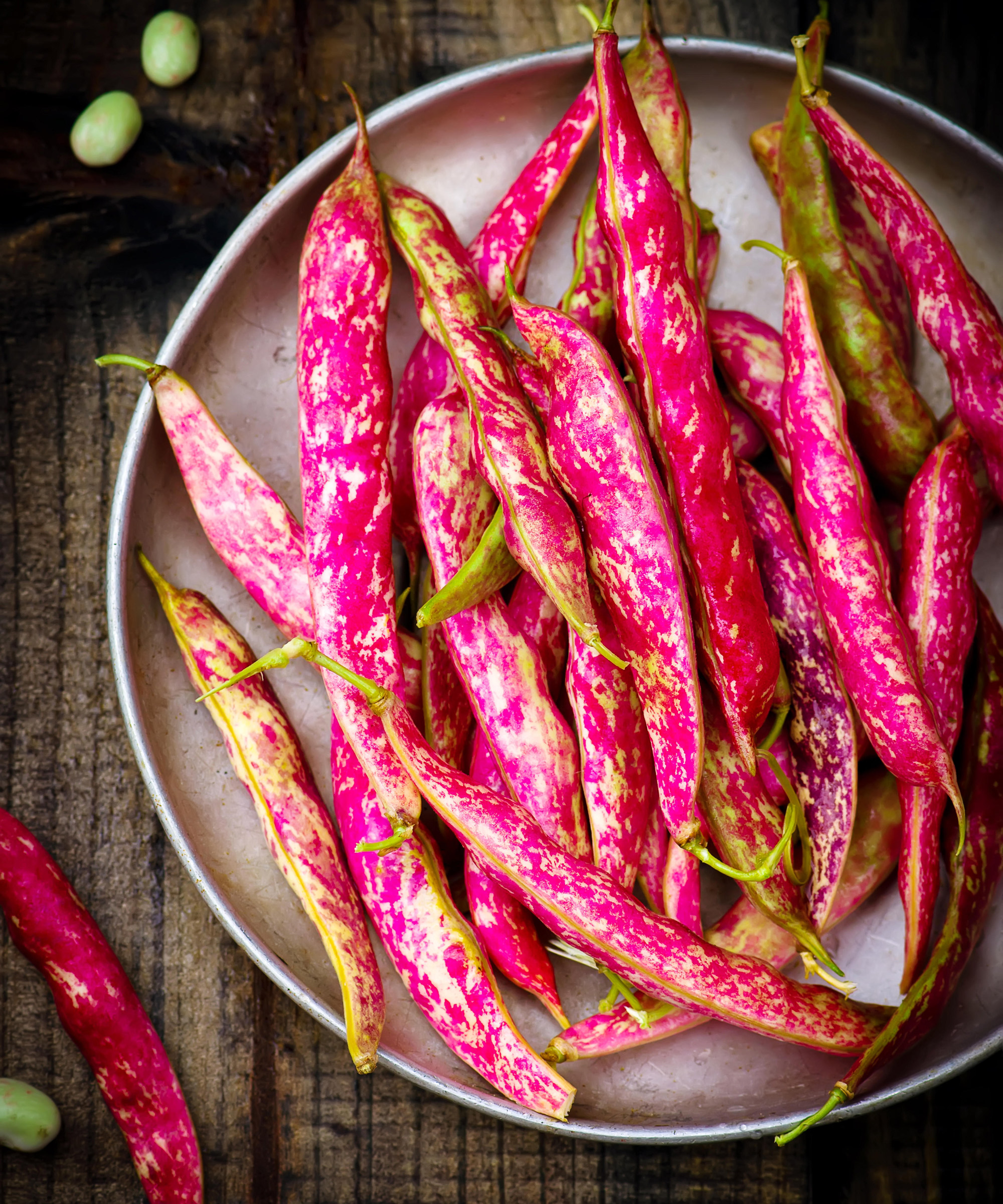
The cranberry (borlotti) bean is a pink-podded dynamo guaranteed to make a splash in any kitchen garden. Borlotti beans (a group of climbing French beans, including ‘Lingua di Fuoco’ and ‘Splendido’) demand attention. But that doesn’t make them hard work: quite the opposite! Perfect for pretty potager gardens, ornamental borders and rustic displays, these vibrant cropping plants are ideal for anyone who knows how to grow French beans or runner beans and wants to add visual dynamics to their plot. Cranberry beans are also ideal for cooler climates and offer excellent levels of disease resistance.
Cranberry beans (Phaseolus vulgaris) make excellent vegetables to plant in May if you have started a few off indoors already – but they can also be direct-sown in the ground now. And if you are looking for stunning vertical garden ideas, you can’t go wrong with beautiful Borlottis. Just space plants 10in (25cm) apart. And make sure sowings and plantings are accompanied with teepees, wigwams, poles or trellises. The right climbing plant support will ensure that crops can enjoy optimum sunshine and helps to protect them from pests and rotting.
As long as soil is light and free draining, there is little else beans need – except hydration, and lots of it! This is critical once beans start flowering and pods swell, so don’t skimp. Moisture-retaining mulches and high nitrogen liquid feeds will also help you cultivate the yummiest yields. Then pick regularly to keep things in the pink for as long as you can.
10. Gherkin

The last entry in our list of must-have vegetables to plant in May is the cornichon (or gherkin) cucumber, aka the pickle cucumber. These finger-sized fruits are designed for pickling, which gives you a chance to try your hand at preserving as well as gardening. We recommend you try ‘Vert Petit de Paris’ (pictured) if you are pickle-making for the first time. This traditional French heirloom pickling cucumber is a quick grower, taking just 12 weeks from planting to harvesting. Still, there are plenty of other great cucumbers suited to the task, including ‘Boston Pickling’, ‘Calypso’, ‘Sassy’ and ‘Picklebush’.
If you know how to grow cucumbers, the process is similar for pickling breeds. These diminutive yet prolific croppers are equally suited to a mini greenhouse, modest container gardening ideas or a sunny garden bed. Sow undercover (one seed per pot), and grow at 18-21˚C (64-70˚F). Alternatively, direct-sow once the risk of frost has passed. ‘There’s no need for fiddly training or pollination requirements,’ says Lucy Chamberlain. ‘They pretty much look after themselves!’ Just water and feed weekly with a high-potash feed, and make sure your baby cukes get plenty of sunshine and ventilation. Then the only thing to do daily is check for fruits once cropping begins.
For the perfect pickles, make sure harvests are only finger thickness (any bigger and skins may be tough). Once you have a decent stash, chop and pack in salt overnight, then rinse and bottle in vinegar. Add peppercorns and mustard seeds to taste. And voila! Pickle heaven.

As assistant editor of Amateur Gardening magazine, Janey's gardening passion was fostered from an early age, when her amazing mum had her deadheading hydrangeas, mulching roses, and propagating strawberry plants from runners for school open days. She's also taken part in lots of conservation and rewilding projects for the RHS and TCV as a way of exploring her horticultural horizons.
